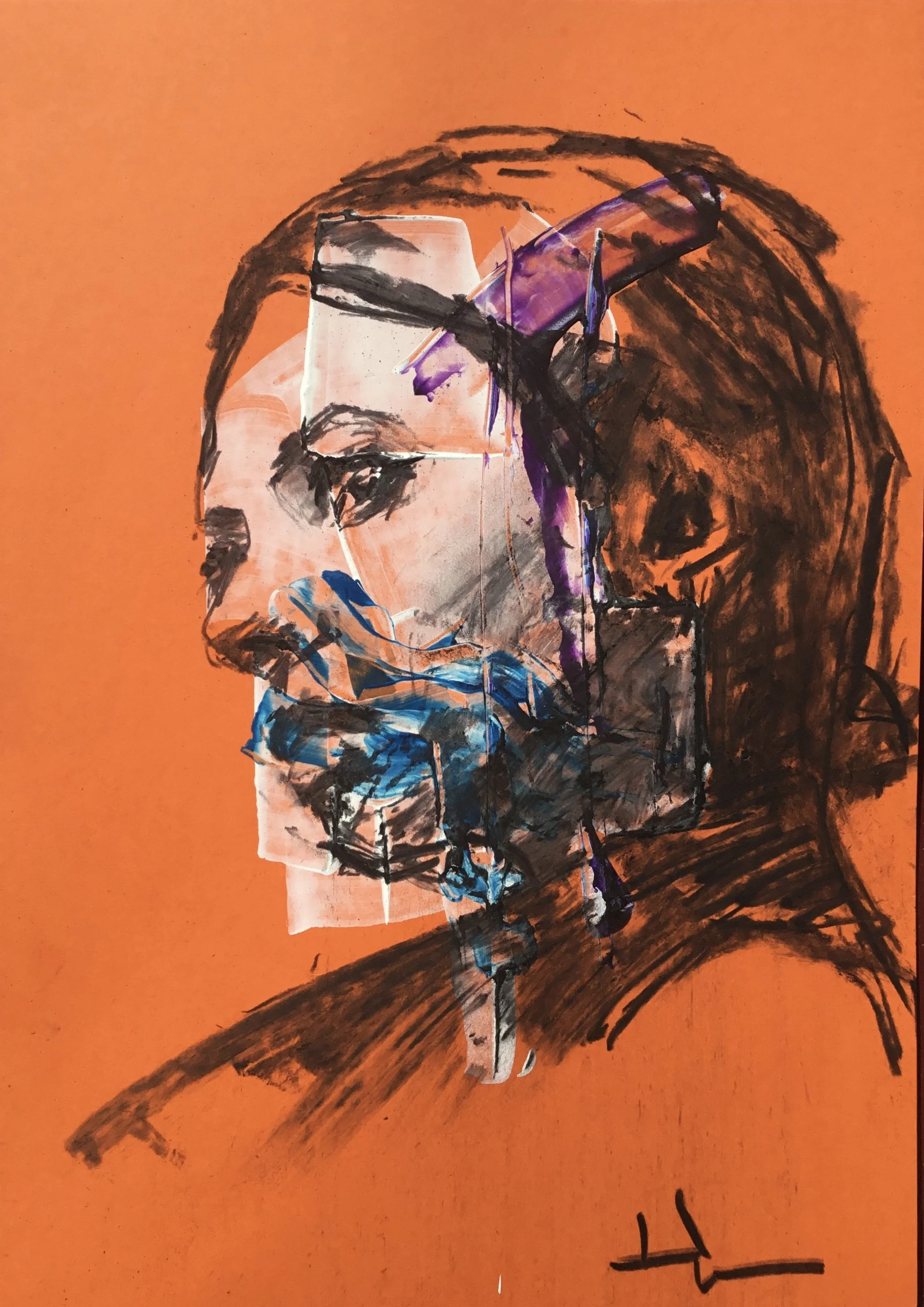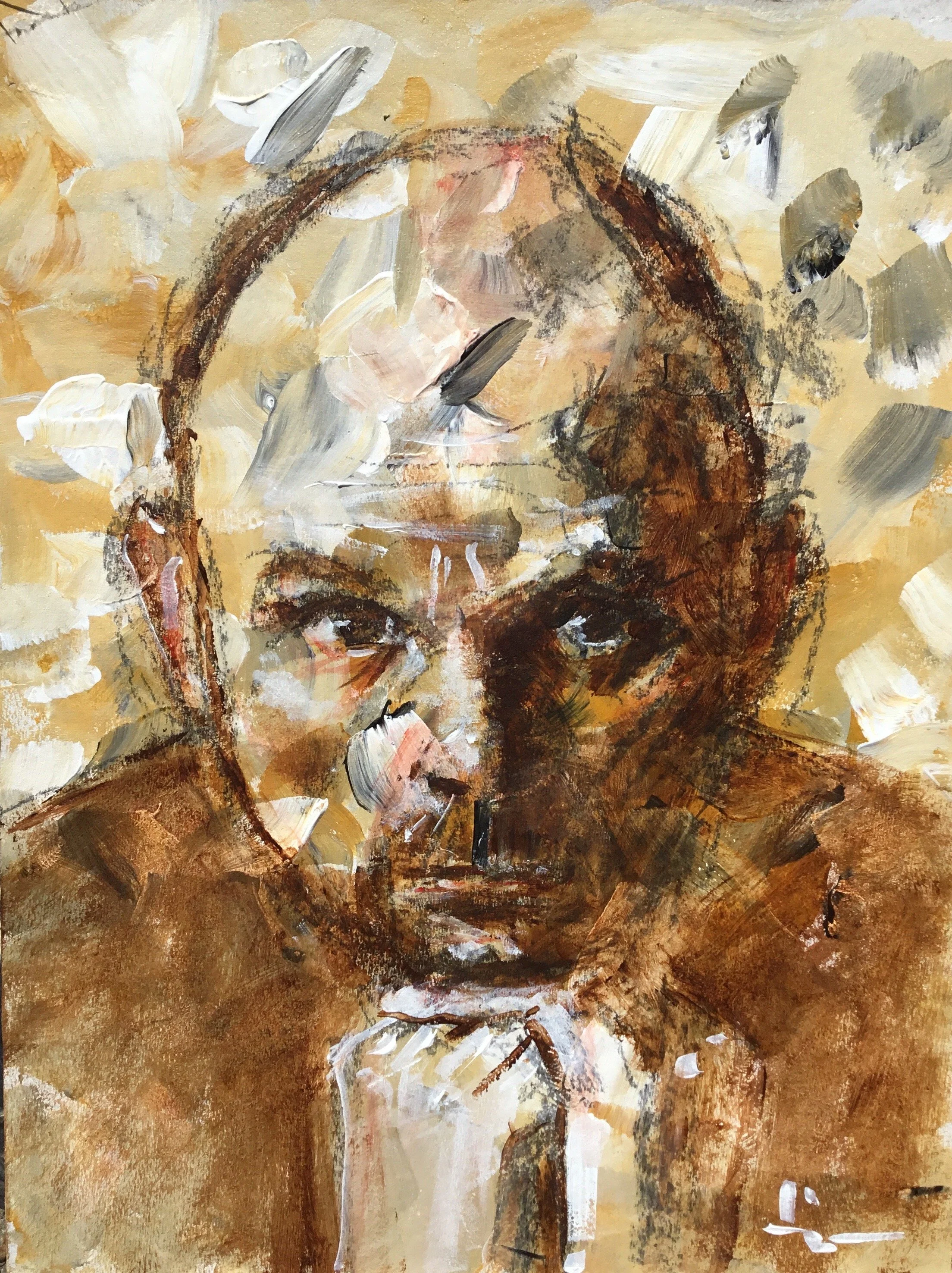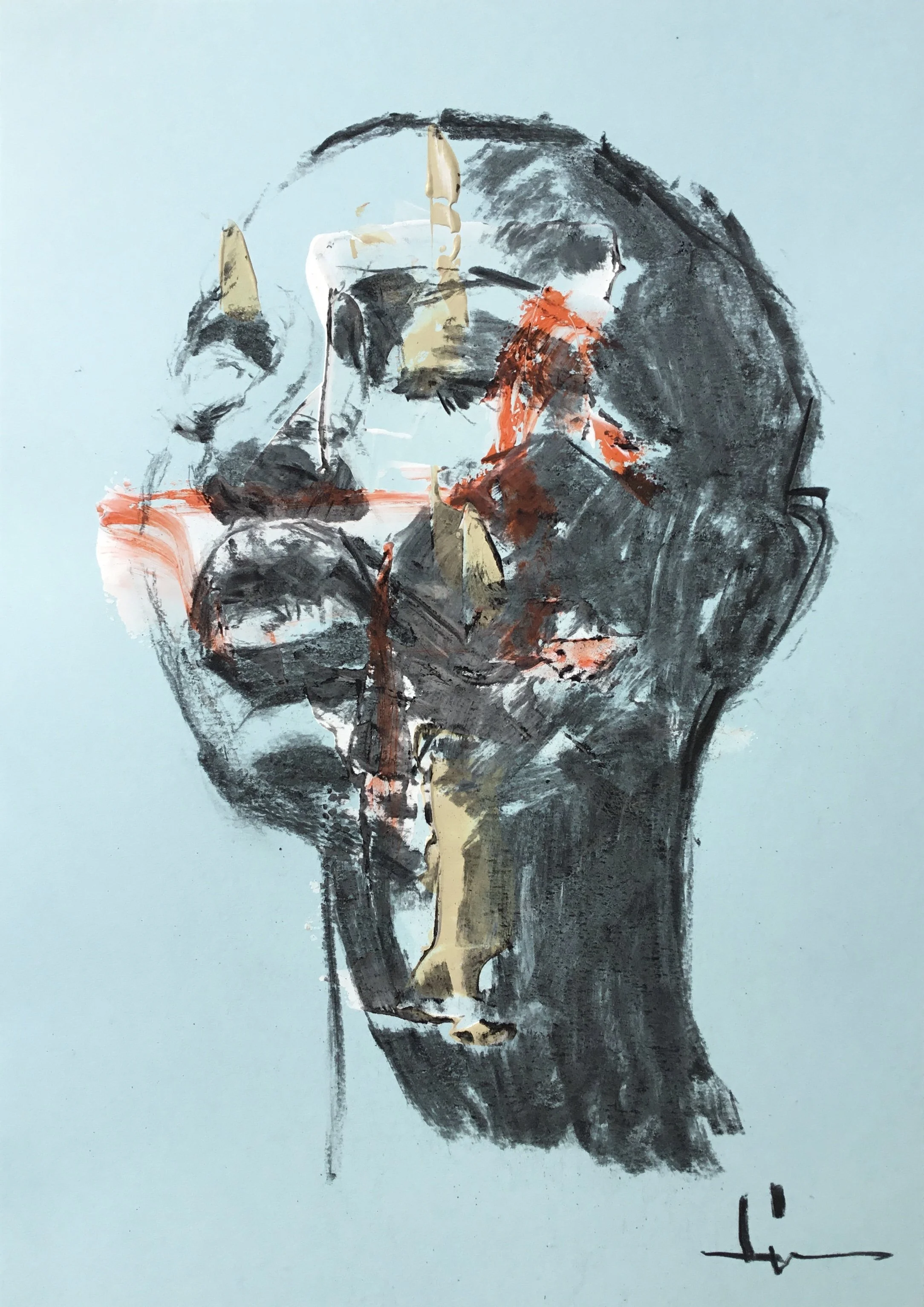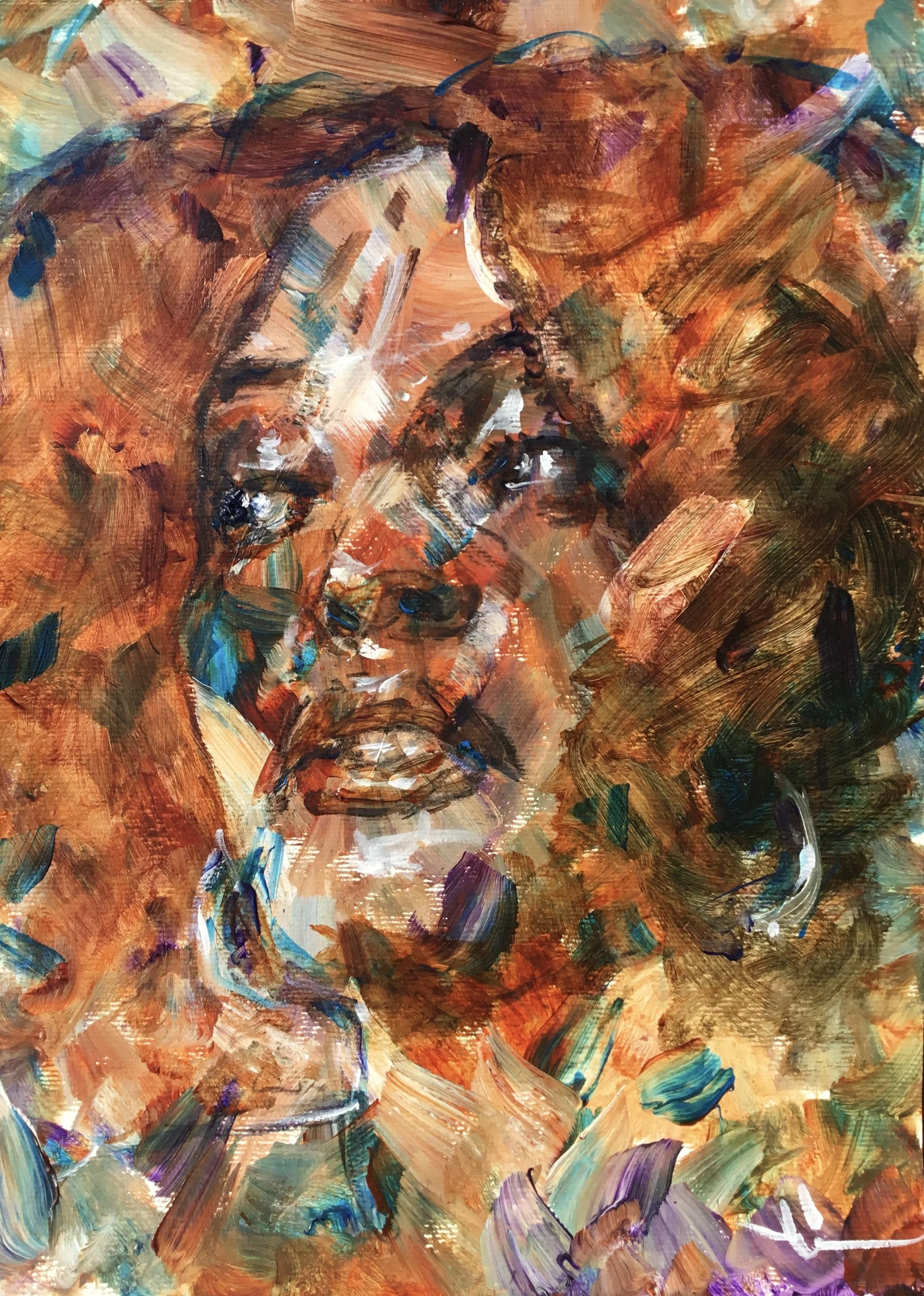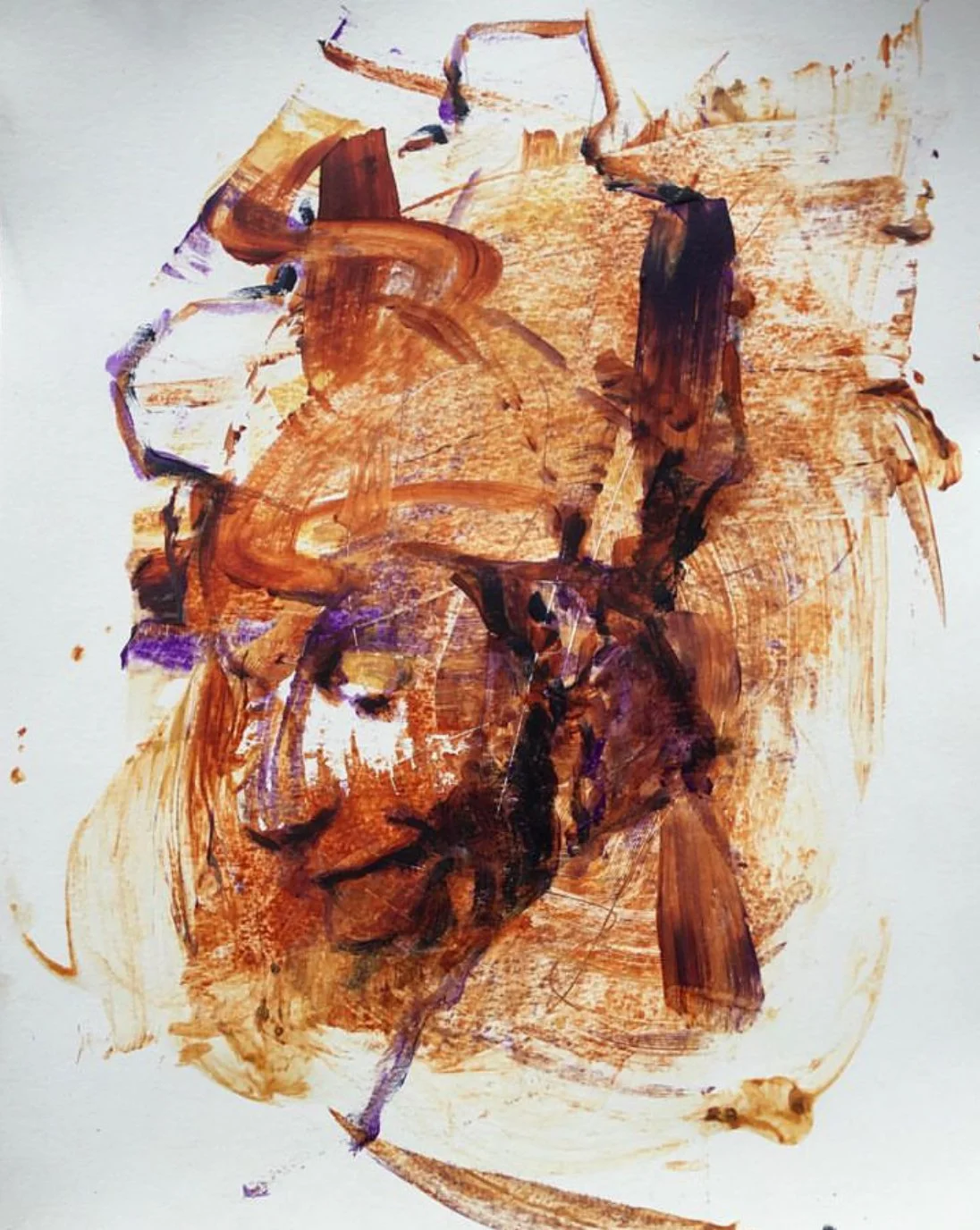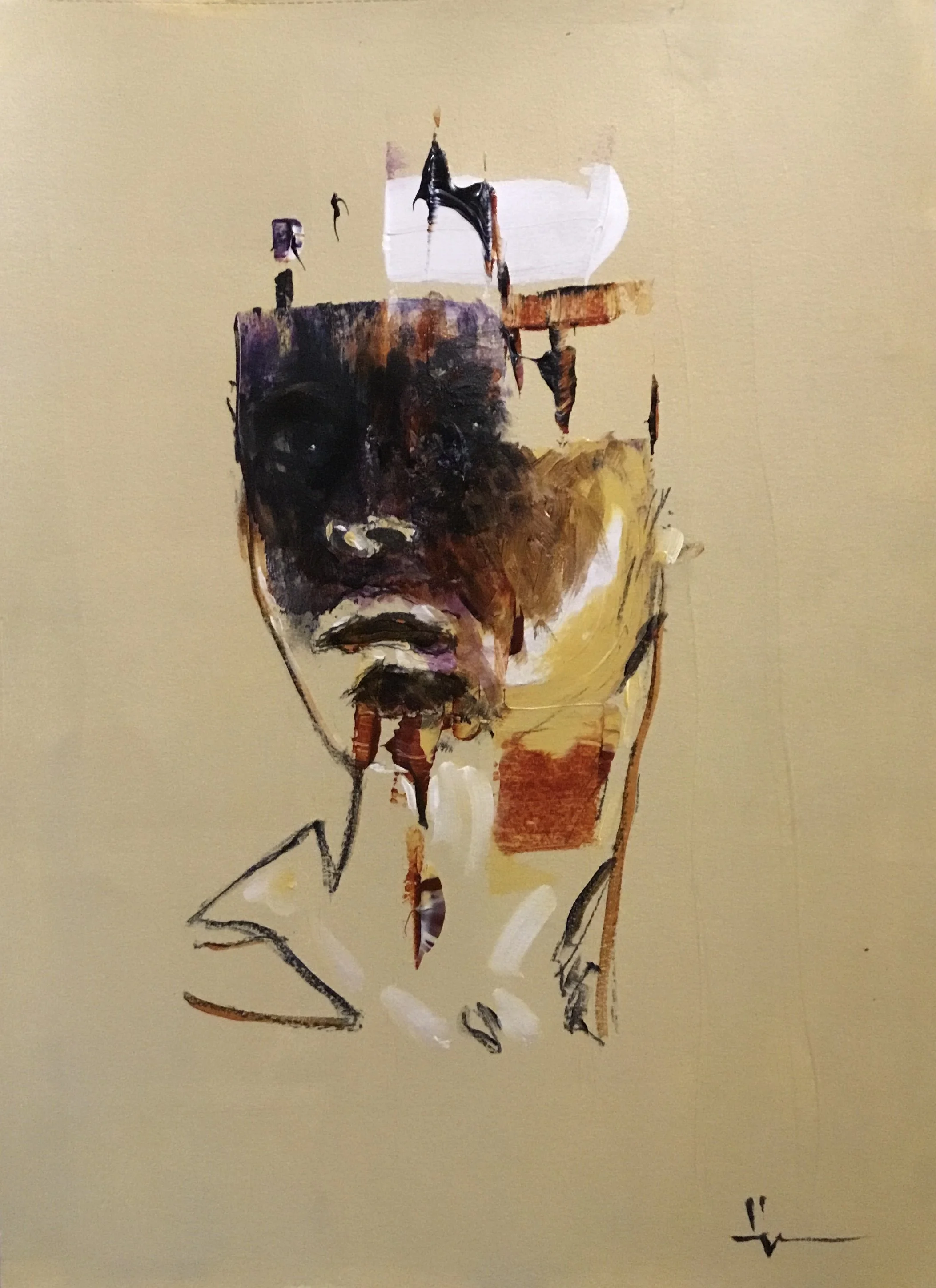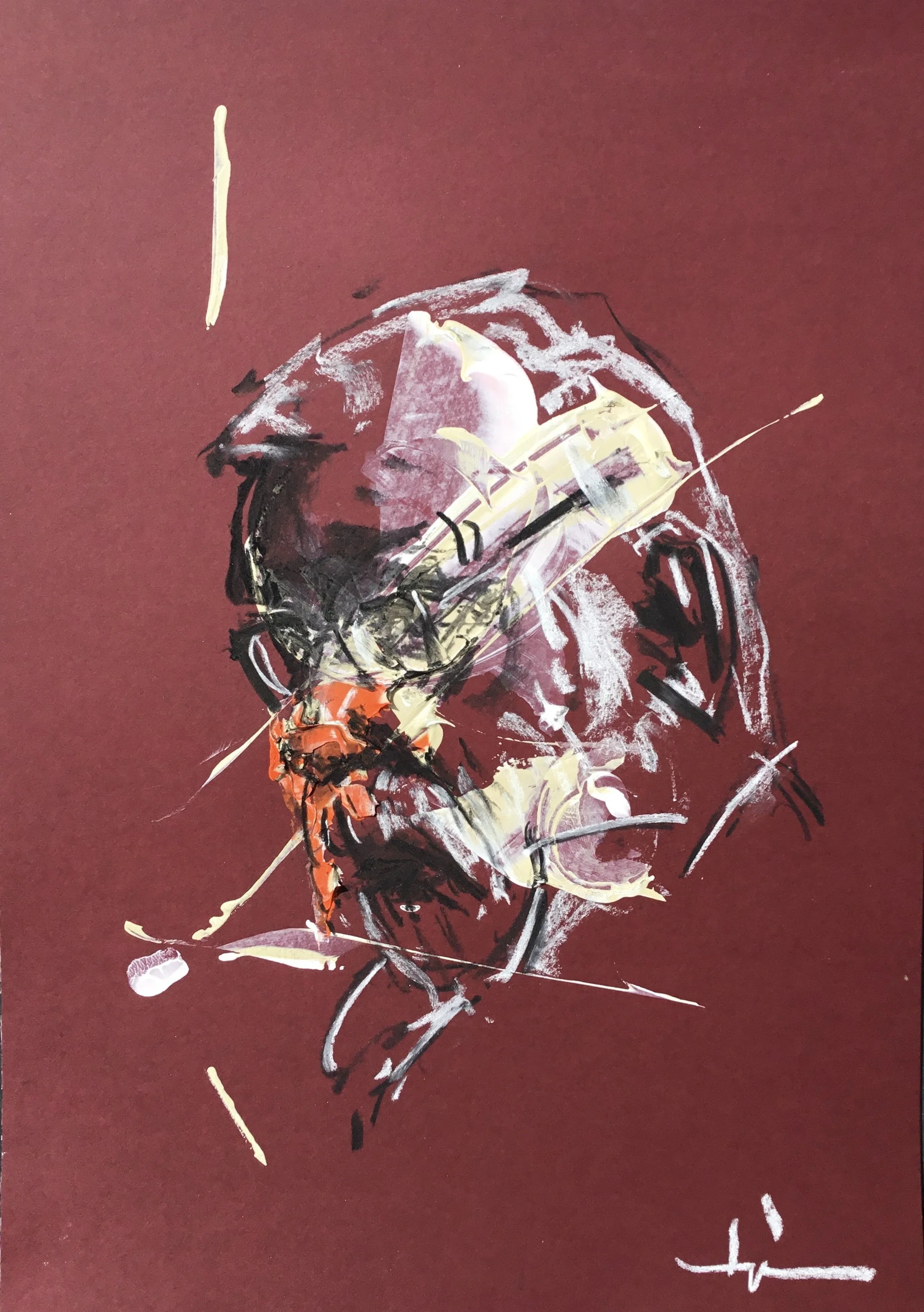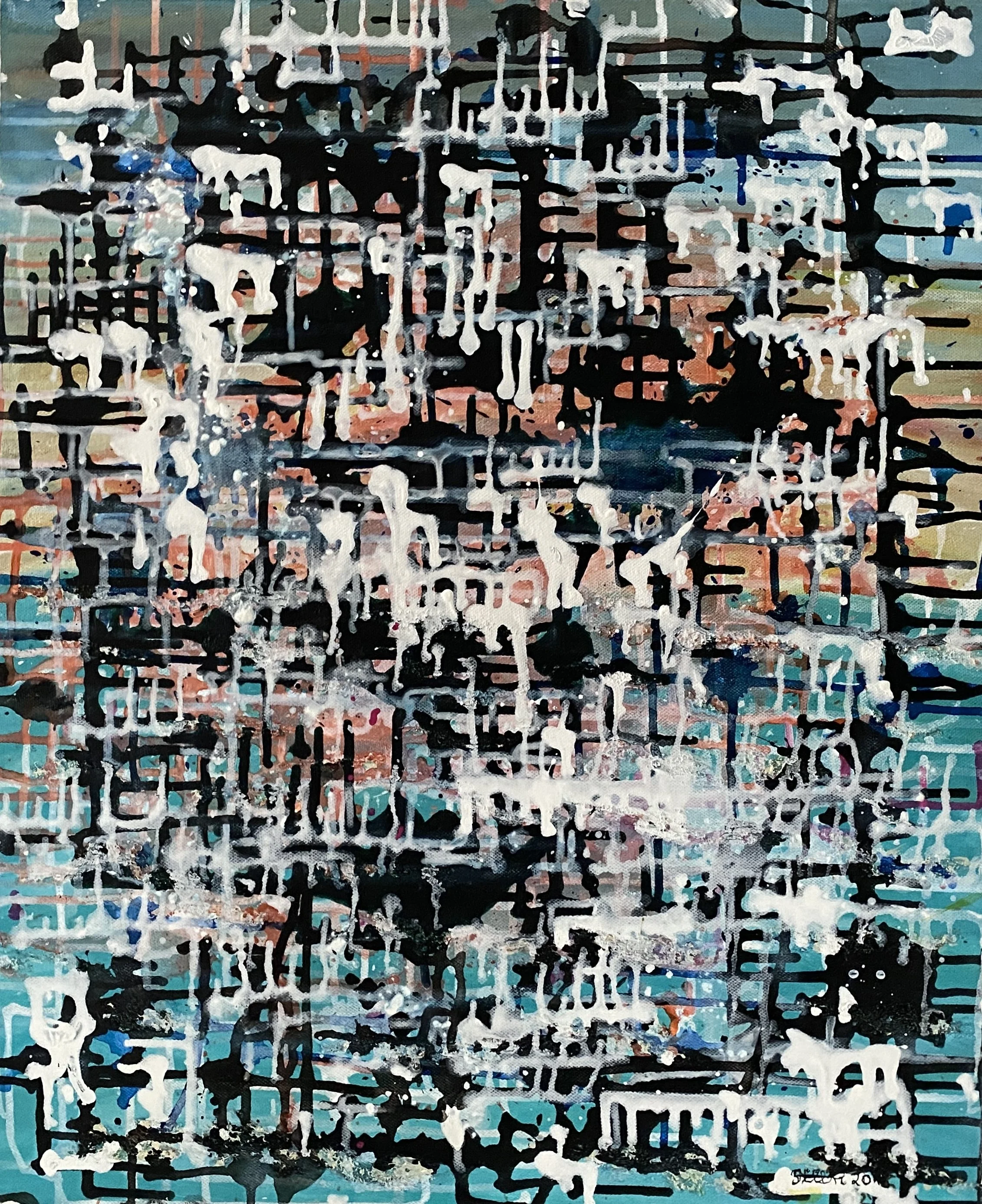Interview with Dominique Deve
French artist Dominique Deve possesses the artistic talent to vividly portray human beings as we know them: not shiny, sleek and perfect in their mental and physical form, but full of emotional frailty and physical flaws. He has a keen eye for the immense diversity of people who surround us and their unique characteristics. Deve's portraits make us wonder who these people are, what has happened to them and where do they come from. We may not know them personally but we recognise them. An original artist with a deft brush.
In your portraits, there is a palpable tension between the chaos of the swirling paint strokes and the order inherent in the recognizable human forms. How do you navigate the balance between these opposing forces in your creative process, and what does this interplay signify about your perception of human identity?
I like surprises. I prepare my backgrounds in advance without knowing what they will be used for precisely. When I do a portrait, I choose a background and I am often surprised by the distribution of colors on the canvas. This surprise is also shared, I believe, by the viewer who interprets it as a feeling or an expression of the model. Of course, the final goal is to obtain a portrait where the color (the chaos) reveals the hidden complexity of the model.
Your use of subtle and lifelike colors contributes significantly to the emotional depth of your portraits. Could you elaborate on how your color choices reflect your philosophical views on the complexity of human emotions? How do you decide which hues will best convey the psychological states of your subjects?
I am more of a designer to begin with. I am very careful with color. I use limited palettes. I do not mix on the palette but rather directly on the canvas. I do not seek to use realistic colors (for the skin for example) but I respect the values. I choose the models for their expression, the color (as I use it) will create the impression of an emotion. So, for me, there is no direct correspondence between a color and an emotion.
Each of your portraits seems to tell a story, emerging vividly from the canvas. What role do you believe the artist plays in narrative creation, and how much of the story do you intend to define versus leaving open to the viewer’s interpretation?
For me, it is the viewer who interprets the portrait and builds a story for it. I propose a subject, often born from a surprise, or a shock, between the palette and the subject. This result is not the result of chance: I chose the background, the palette, the technique and during the creation of the portrait my features were guided by what emerged little by little.
Your work is noted for incorporating elements that are ‘part of the real, untidy world’. How do you conceptualize the 'real' in your artwork, and in what ways do you think this approach challenges or enhances the viewer's engagement with your pieces?
In my work, reality is what will guide the viewer to reconstruct the portrait he is looking at. A few lines are often enough to suggest (rather than giving all the details) the human form. For this I respect the classic codes of portrait construction. Often the decor/background will be present on the face. I like this idea of transparency and the impression it can give to the viewer. He has a representation of the portrait that will guide him in his commitment.
Your adventurous approach to portraiture and the masterful execution of paint strokes hint at influences from past art movements. Could you discuss which historical artists or movements have influenced you the most and how they manifest in your current style?
Velazquez, Courbet, Lautrec, Bacon, Kokoschka… My classical approach to drawing owes a lot to the great masters I studied and copied. They gave me the means to connect the viewer to the reality we were talking about earlier. The chaos I place in the background of my portraits is only of interest to me if it serves to highlight the rigorous construction resulting from my knowledge of the painters I studied.
Your art is described as intriguing and full of mystery. What is the role of mystery in creating compelling art, and how do you consciously incorporate elements of the unknown into your work?
The mystery we are talking about probably comes from two things: first the construction technique that I use with backgrounds prepared in advance (blind) and then the choice that I make of the model and the background that will correspond to it. There is a bit of chance, personal choice and sensitivity there. I must also specify here that I like to work quickly, this also guides my way of working. I have a lot of trouble taking up an unfinished work later…
Over the years, how has your technique evolved? Are there any particular experiences or experiments that have significantly influenced changes in your approach?
In 2018, the portrait “Zarah” was a turning point in my work. I was testing different techniques and I really liked the result. I said to myself: this is something that really suits me. At the time, I was in the middle of a nervous breakdown and the portrait work was part of my healing. Since then I have explored other palettes, I have modified the technique but the founding principle has remained the same.
Can you share some of the philosophical or literary works that have influenced your understanding of human nature and how these influences are reflected in your art?
I followed a university education in human sciences and I read Freud, Bachelard and Edgar Morin. For literature, Dostoyevsky, Céline, Joseph Conrad and Flaubert showed me a complex and fascinating human soul that is worth spending time on, to better understand oneself. I also participated in poetry magazines as an illustrator where words intertwine with images.
What do you believe is the role of the viewer in completing the art experience? How do you envision the interaction between your artwork and its audience?
I often say: "The portrait is the mirror of the soul of the model, the painter but also the viewer". I do not aim to show the viewer a complete and finished work (I often like to leave construction lines) but rather a support for a reconstruction. As if I were doing part of the journey and the other part was the responsibility of the viewer. The classic elements of portrait construction are there to guide him.
Looking to the future, how do you see your work evolving? Are there new themes or techniques you are eager to explore, and how might they reflect your ongoing philosophical inquiries or societal observations?
I have a project to work on the format. When I exhibit with other painters, I am always in awe of the large canvases. I have to find a way to transpose my current technique. A difficult task if I want to keep the spontaneous and rapid aspect of my work. I am always looking for new palettes and if I master the form in my own way, color will always remain the object of my research. I am now part of a group of painters called "figurative destructuralism" which brings together artists whose work has points in common with mine. We are doing an exhibition in Paris in October 2024.
www.dominiquedeve.com


